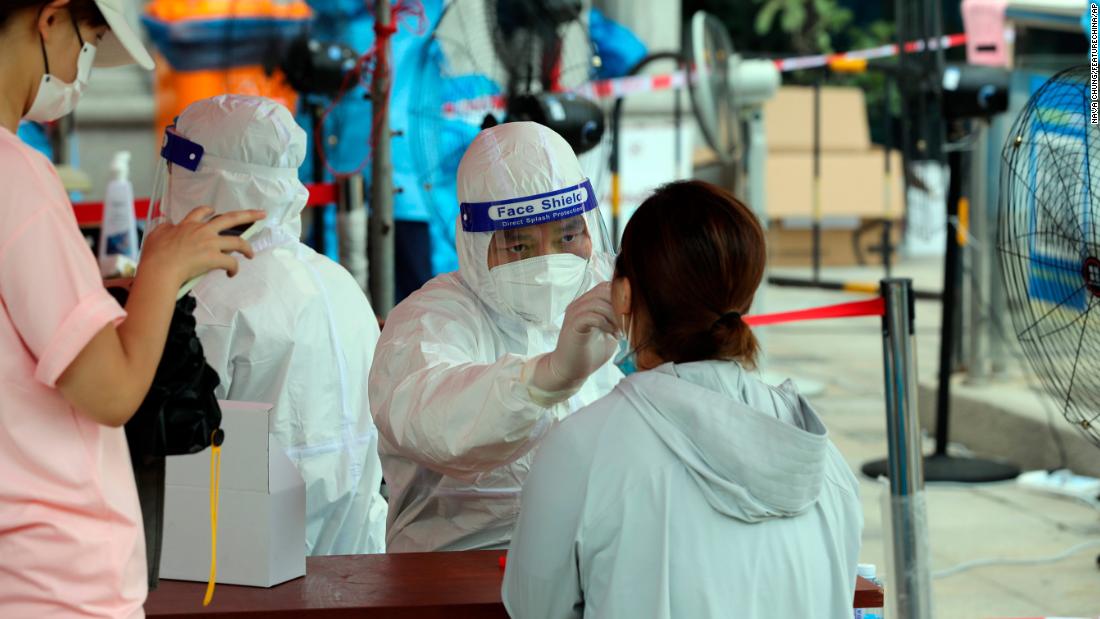
The National Health Commission (NHC) on Monday reported 59 cases in Fujian, including 24 in Putian and 32 in Xiamen, one of the major popular coastal cities among tourists. On Tuesday, the two cities launched massive Covid tests for all residents.
Putian has about 3 million residents, while Xiamen has a population of 5 million. Both cities have ordered residents not to leave the city for non-essential trips. People who have legitimate reasons to leave must have a negative coronavirus test performed within the last 48 hours. Long-distance buses leaving the two cities have also been suspended.
On Tuesday, Xiamen imposed specific closures on residential neighborhoods affected by the outbreak, with residents banned from leaving their apartments or complexes. It also closed libraries, museums, bars, cinemas and gyms, banned large-scale meetings and canceled events celebrating the Mid-Autumn Festival, a three-day party that begins on Sunday.
Similar restrictions have also been imposed on Putian. The city has reported a total of 85 infections, including 30 children under the age of 10, the city government said at a news conference Tuesday.
In Xianyou, authorities have placed more than 3,000 direct and secondary contacts of quarantined infected cases, including a large number of schoolchildren, some of whom have been separated from their parents, according to Wu Haiduan, head of the county government.
“It’s a difficult issue when outbreaks occur among children,” Wu said. “If children can be quarantined independently, we quarantine them independently. If they need parents to accompany them, we arrange for parents to stay in a room next door so they can chat with each other. Of course , they can only chat next door. “
As of Tuesday, no related cases have been reported outside of Fujian, but local governments across China are on high alert. The NHC estimates that some 30,000 people in Putian, the epicenter of the latest outbreak, had left the province in the two weeks leading up to Friday.
The week-long holiday, known as “Golden Week” and beginning on October 1, is one of the busiest times to travel to China, with hundreds of millions of people waiting to pack highways, trains and planes. .
Infected children
The latest outbreak in Fujian was first detected in students at a primary school in Xianyou. Since then, infections have been found in students from various nursery and primary schools.
In Putian, 8 kindergarten students and 28 elementary students have been infected, according to the government.
Xiamen and Putian have closed schools and kindergartens and ordered them to take online classes.
Experts quoted by the state’s Global Times called on the country to expand its Covid-19 vaccination program to cover children between the ages of 3 and 12.
In Putian, the government urged schools to intensify efforts to administer second doses of Covid vaccines to 12- to 14-year-olds and complete vaccination for students between the ages of 12 and 17 by Wednesday.
The Fujian outbreak has highlighted the growing challenge facing China’s ambitious zero-coveted strategy, which raises questions about its long-term sustainability.
Experts advising the government pointed to a father who recently returned from Singapore as the likely source of the outbreak, despite having been the subject of a long and draconian quarantine.
The man arrived in Xiamen, the provincial capital of Fujian, on August 4, where he spent 14 days of mandatory hotel quarantine. He spent seven more days in centralized quarantine in Xianyou, before returning home for another week of health surveillance, according to the Putian government.
He had tested negative for the virus nine times for 21 days in quarantine, before testing positive on Friday – 37 days after entering China, according to state media.
Chinese authorities did not reveal when, where or how the man caught the virus, but an incubation period of more than 21 days is very unusual.
Researchers at the Guangdong Provincial Center for Disease Prevention and Control found that the Delta variant has an average incubation period of 4 days, compared to an average of 6 days for the original strain.
Some have asked on social media if the man caught the virus after returning to Xianyou.
CNN’s Beijing office and Zixu Wang helped report.